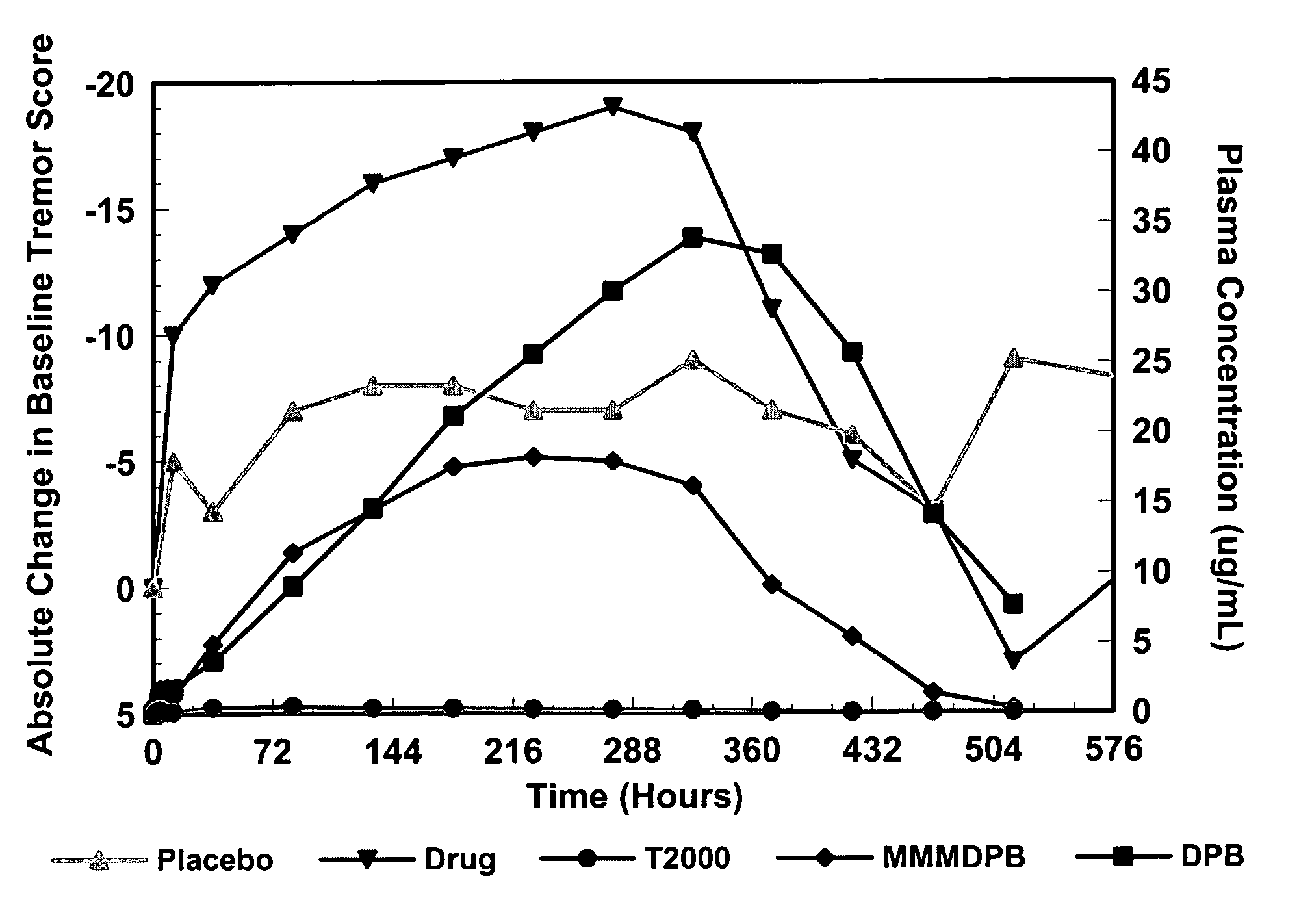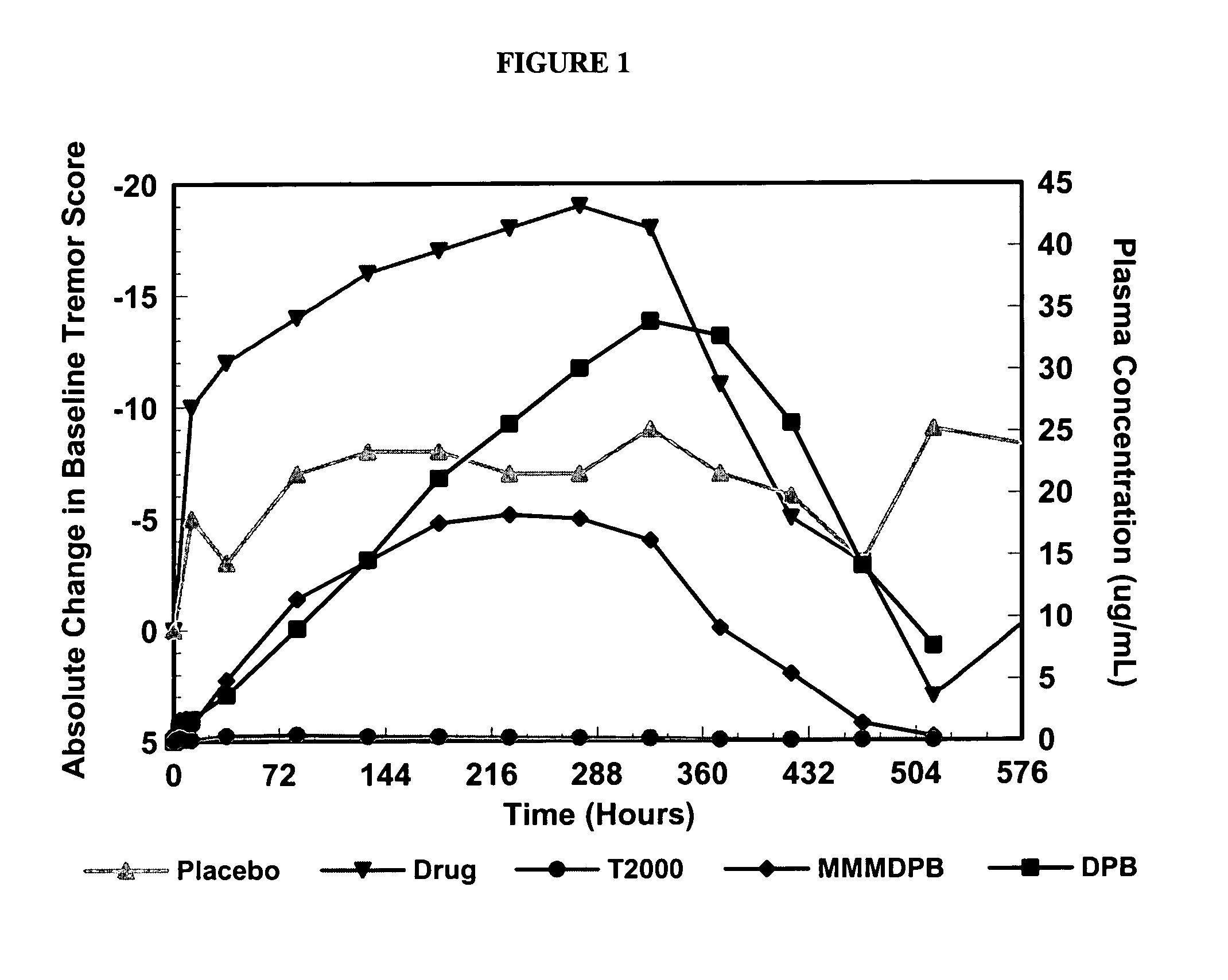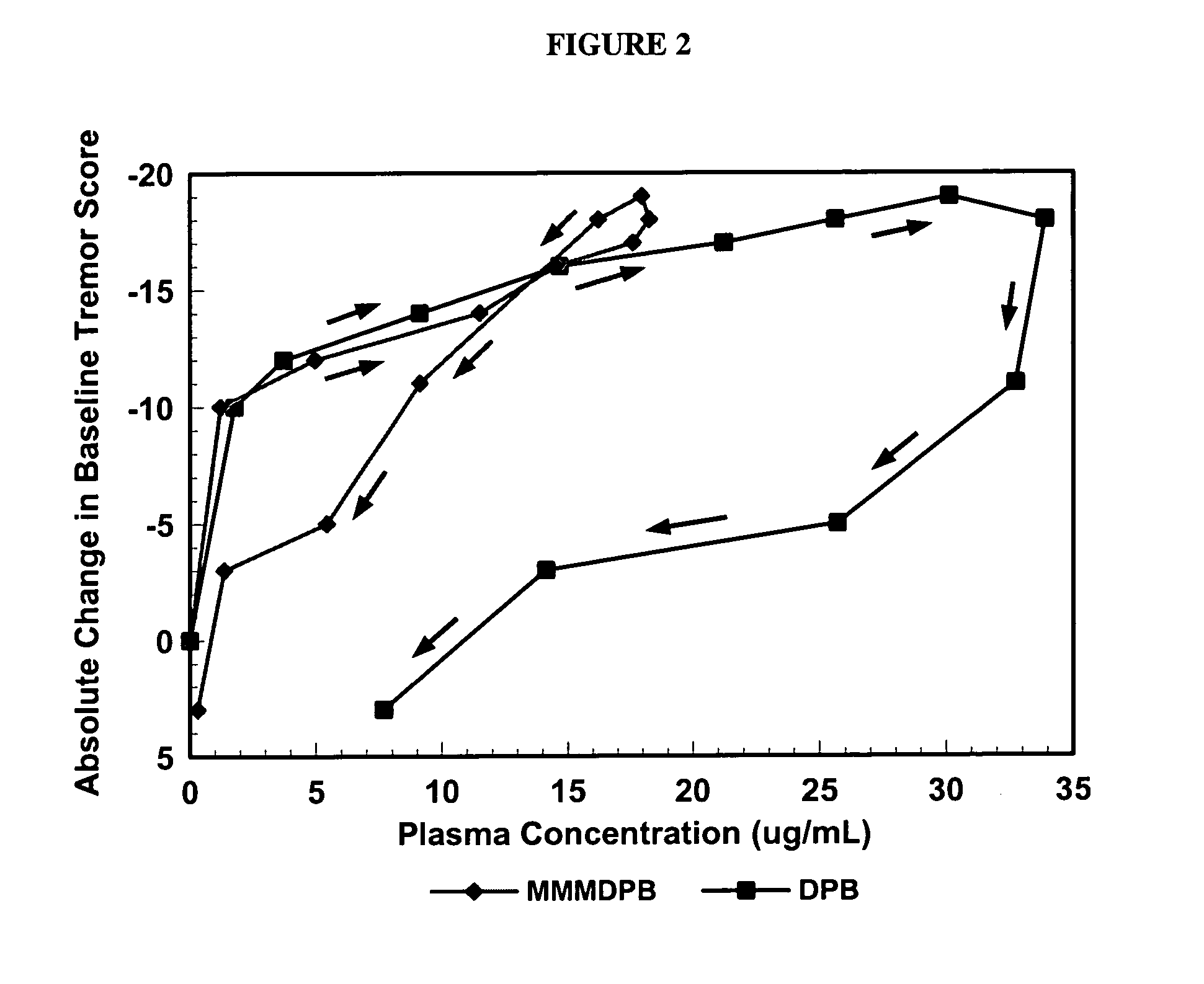Method of treating movement disorders using barbituric acid derivatives
a technology of barbituric acid and derivatives, applied in the field of treatment of movement disorders, can solve the problems of difficult to achieve, difficult to achieve, and the simplest of tasks is impossible to perform
- Summary
- Abstract
- Description
- Claims
- Application Information
AI Technical Summary
Benefits of technology
Problems solved by technology
Method used
Image
Examples
example 1
Synthesis of MMMDPB
[0130]A reactor was charged with chlorobenzene (15 ml), and stirring and an N2 flow were started. N,N′-bismethoxymethyl barbituric acid (1.84 g) was added to the reactor. The mixture was stirred for 10 minutes and then heated up to 55–60° C. The mixture was stirred for another 10 minutes. Aluminum chloride (AlCl3, 0.66 g) was added. The mixture was stirred for 10 minutes at about 60° C. The mixture was heated up to 100–110° C. and stirred for another 10 minutes. The mixture was cooled to 60° C. The N2 flow was stopped. A cold solution of hydrochloric acid (32%, 0.5 ml) in deionized water (30 ml) was added. The mixture was stirred at 5° C. for about 30 minutes. The suspension was filtered, and the filter cake was washed with cold chlorobenzene (2 ml). The filtrate from the washing was added to the filtrate from the filtration. The chlorobenzene (lower) phase was separated. The majority of chlorobenzene from the lower phase was allowed to evaporate. The resulting re...
example 2
Treatment of Essential Tremor in a Phase II Double-Blind Study
[0132]Twelve patients were selected using criteria for definite essential tremor as classified by the National Institute of Health (NIH) Diagnostic Criteria for Essential Tremor and the Tremor Investigation Group (TRIG) Proposed Criteria for Diagnosing Essential Tremor. See Jankovic J. Essential Tremor: Clinical Characteristics, Neurology, 20000:54 (Suppl 4); S21–25, incorporated by reference in its entirety. According to these protocols, patients must have bilateral postural tremor of both upper extremities with an amplitude rating of 2 or greater in one arm and 1 or greater in the other, which is visible, persistent, and longstanding (preferably>3 years). Patients were tapered off medications and vitamins, energy drinks, grapefruit and supplements 7 days prior to the commencement of the study. They were instructed to stop tremor medications 14 days prior to study commencement, after taper. There were some dietary restri...
example 3
Treatment of Parkinson's Disease
[0144]Patients with treated, symptomatic Parkinson's disease are often troubled by tremor, by dystonia and chorea movements (dyskinesias) secondary to dopaminergic agents and by prominent motor fluctuations throughout the day (“wearing-off” or “on-off”). In addition, Parkinson's disease may sometimes have some intrinsic dystonic features. All of these tremor features may potentially be alleviated by treatment with T2000 or related compounds.
[0145]We will select 25 patients having on-off phenomena and 25 patients with tremor (the two groups may partially overlap, i.e., some patients may exhibit both syndromes). These patients will be treated with from 400 up to 800 mg of DMMDPB orally each day for two to three weeks. Patients will be monitored every other day to evaluate the degree of reduction in tremor and time in the “off” state as indicated using a modification of the Unified Parkinson's Disease Rating Scale (UPDRS). Koller, W. C., and Tolosa, E., ...
PUM
| Property | Measurement | Unit |
|---|---|---|
| frequency | aaaaa | aaaaa |
| weight | aaaaa | aaaaa |
| temperature | aaaaa | aaaaa |
Abstract
Description
Claims
Application Information
 Login to View More
Login to View More - R&D
- Intellectual Property
- Life Sciences
- Materials
- Tech Scout
- Unparalleled Data Quality
- Higher Quality Content
- 60% Fewer Hallucinations
Browse by: Latest US Patents, China's latest patents, Technical Efficacy Thesaurus, Application Domain, Technology Topic, Popular Technical Reports.
© 2025 PatSnap. All rights reserved.Legal|Privacy policy|Modern Slavery Act Transparency Statement|Sitemap|About US| Contact US: help@patsnap.com



